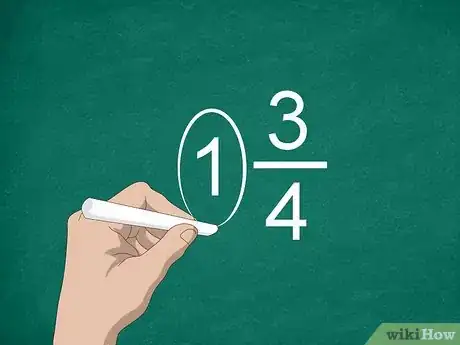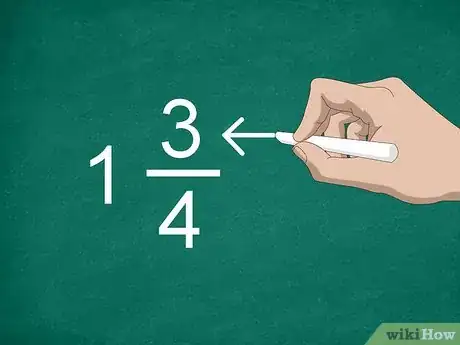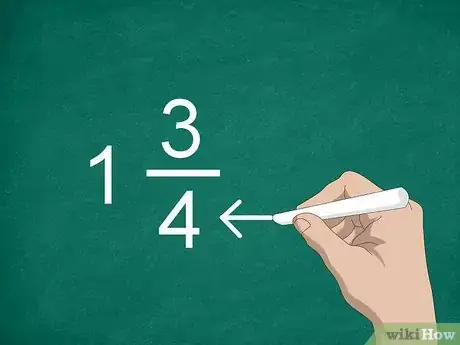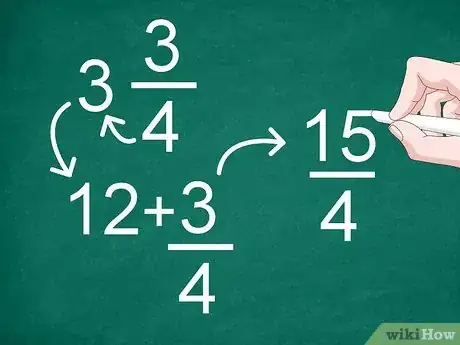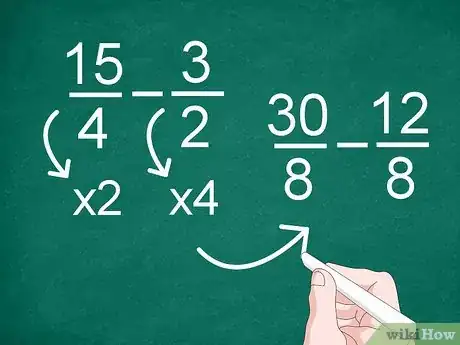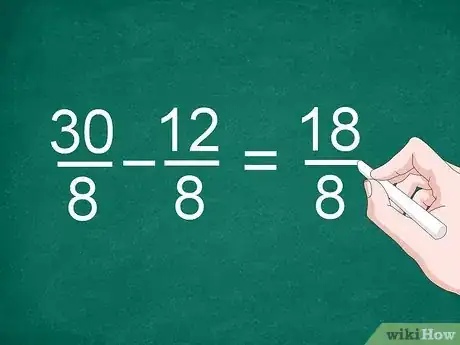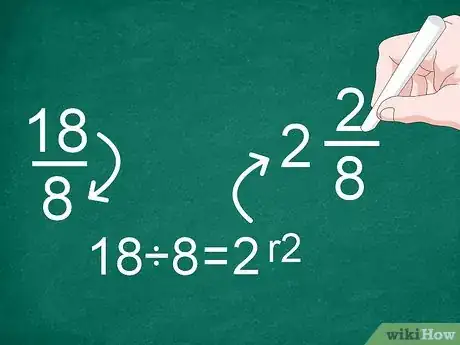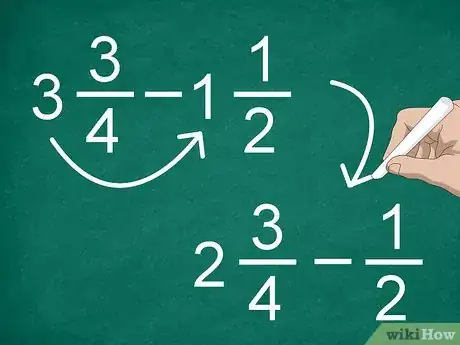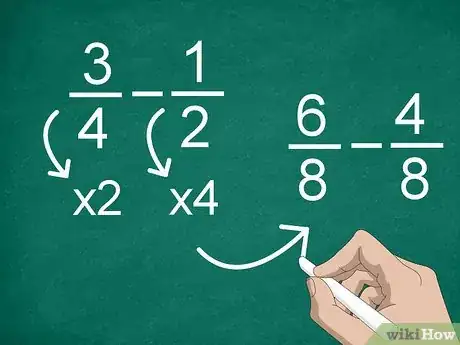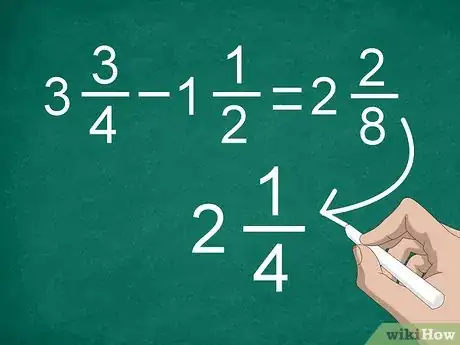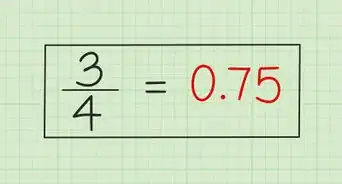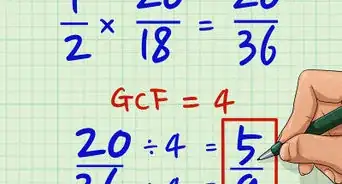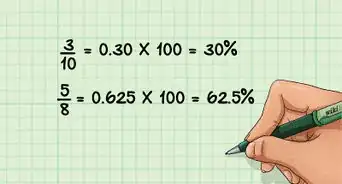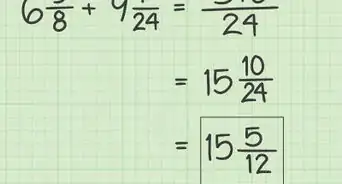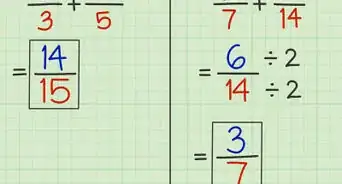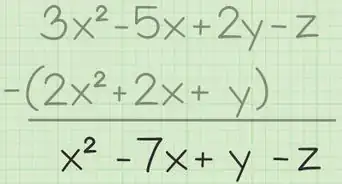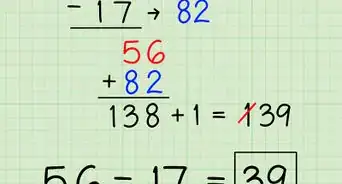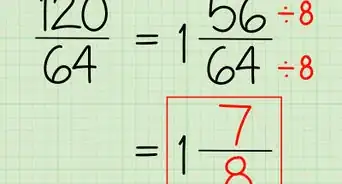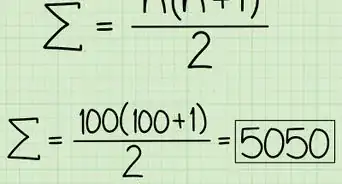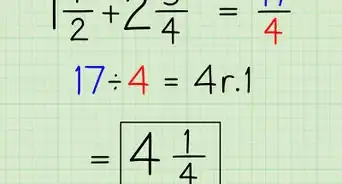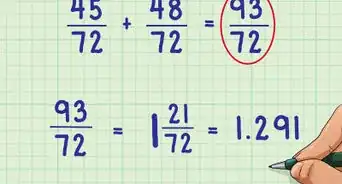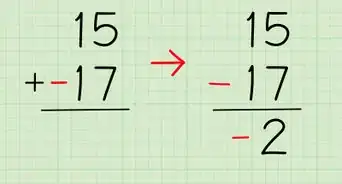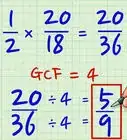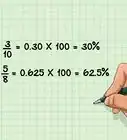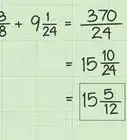This article was co-authored by Jake Adams and by wikiHow staff writer, Jessica Gibson. Jake Adams is an academic tutor and the owner of Simplifi EDU, a Santa Monica, California based online tutoring business offering learning resources and online tutors for academic subjects K-College, SAT & ACT prep, and college admissions applications. With over 14 years of professional tutoring experience, Jake is dedicated to providing his clients the very best online tutoring experience and access to a network of excellent undergraduate and graduate-level tutors from top colleges all over the nation. Jake holds a BS in International Business and Marketing from Pepperdine University.
There are 8 references cited in this article, which can be found at the bottom of the page.
This article has been viewed 88,866 times.
Subtracting mixed numbers can look challenging at first, but making a few simple conversions will make it easy. Once you can identify parts of a mixed number, decide if you want to convert the mixed numbers into improper fractions or if you want to subtract the whole numbers and fractions separately. Make the denominators of the fractions the same and then subtract the numerators.
Steps
Identifying Parts of a Mixed Number
-
1Look for the integer. A mixed number will contain a whole number and a fraction. The whole number should be positive, negative, or zero because it's an integer.
- For example, in the mixed number 1 3/4, 1 is the integer.
-
2Recognize the numerator. Look at the fraction and find the number above the dividing line. This number is the numerator and it will tell you how many parts there are of the fraction.
- In the example 1 3/4, 3 is the numerator.
Advertisement -
3Find the denominator. Identify the number below the dividing line to find the denominator. This tells you how many parts it takes to make the whole number.
- For example, 4 is the denominator in the mixed fraction 1 3/4.
Converting to Improper Fractions and Subtracting
-
1Change the mixed numbers into improper fractions. Multiply the integer by the denominator and add the numerator to come up with an improper fraction. Do this for both of the mixed numbers in your equation so you get 2 improper fractions.[1]
- For example, to convert 3 3/4, 3 x 4 = 12 + 3 = 15/4.
- Another example, 1 1/2 would be 2 x 1 = 2 + 1 = 3/2.
-
2Find a lowest common denominator if necessary. If your improper fractions don't have the same denominators, convert the fractions so they do. To find the lowest common denominator, multiply each part of a fraction by the other fraction's denominator.[2]
- For example to find a lowest common denominator for 15/4 - 3/2, multiply the 15 and 4 by 2 and multiply the 3 and 2 by 4. You should get 30/8 - 12/8. Then you can subtract the fractions.
- If the denominators of both fractions are the same, you can skip this step.
-
3Subtract the numerators. Once the denominators are the same, you can easily subtract the numerators to get your result.[3]
- For example, 30/8 - 12/8 = 18/8.
-
4Convert the result to a mixed number. Divide the numerator by the denominator to get an integer and remainder.[4]
- For example, 18 ÷ 8 = 2 with a remainder of 2. This can be written as 2 2/8.
- If you'd like to convert the improper fraction into a decimal, simply divide the numerator by the denominator.
-
5Simplify the result if necessary. Look at the fraction or mixed number you got after subtracting and decide if you can reduce the fraction further. This will give you the simplest result.[5]
- The fraction in the example 2 2/8 can be reduced by 2 to get 2 1/4.
- Keep in mind that in some cases, you may not have a remainder.
Subtracting the Whole Numbers and Fractions Separately
-
1Subtract the whole numbers in the equation. Before you begin working with the fractions, identify the whole numbers and subtract them. If your equation is 3 3/4 - 1 1/2:[6]
- Do 3 - 1 to get 2.
-
2Find a lowest common denominator for the fractions if necessary. Since you've already subtracted the whole numbers, you're ready to subtract the fractions. If they have a different denominator, multiply each part of a fraction by the other fraction's denominator.[7]
- For example, multiply 3 and 4 by 2 to get 6/8. For the other fraction, multiply 1 and 2 by 4 to get 4/8.
- If your fractions have the same denominator, you can skip this step.
-
3Subtract the numerators of the fractions. Once the denominators are the same, just subtract the numerators in your equation. Remember not to subtract the denominators as well.[8]
- For the equation 6/8 - 4/8, subtract 4 from 6 to get 2/8.
-
4Write and simplify the result. Write down the whole number that you already subtracted and place the fraction that you're left with next to it. Reduce the fraction if possible.[9]
- For 3 3/4 - 1 1/2, you'll get 2 2/8. Simplify 2/8 by 2 to get 1/4. Your finished answer will be 2 1/4.
Community Q&A
-
QuestionHow do I subtract 2 3/4 - 11/12?
 DonaganTop AnswererFirst change 2 3/4 to 2 9/12. Then change that to 33/12. Then subtract 11/12. That gives us 22/12. Change that to 1 10/12, and reduce to 1 5/6.
DonaganTop AnswererFirst change 2 3/4 to 2 9/12. Then change that to 33/12. Then subtract 11/12. That gives us 22/12. Change that to 1 10/12, and reduce to 1 5/6. -
QuestionHow do I solve this using the second method (subtract the whole numbers first): 4 3/7 - 2 4/7?
 DonaganTop AnswererBecause the fraction in the subtrahend (the second mixed number) is larger than the fraction in the minuend (the first mixed number), you must "borrow" from the whole number in the minuend. Borrow 1 from the 4 in the minuend, but borrow it in the form of 7/7, and combine it with the minuend's fraction, making that mixed number 3 10/7 (which has the same value as 4 3/7). Now you can use the second method in the above article: first subtract the second whole number from the new first whole number: 3 - 2 = 1, which is the answer's whole number. Now subtract the second fraction from the new first fraction: 10/7 - 4/7 = 6/7. The final answer is 1 6/7.
DonaganTop AnswererBecause the fraction in the subtrahend (the second mixed number) is larger than the fraction in the minuend (the first mixed number), you must "borrow" from the whole number in the minuend. Borrow 1 from the 4 in the minuend, but borrow it in the form of 7/7, and combine it with the minuend's fraction, making that mixed number 3 10/7 (which has the same value as 4 3/7). Now you can use the second method in the above article: first subtract the second whole number from the new first whole number: 3 - 2 = 1, which is the answer's whole number. Now subtract the second fraction from the new first fraction: 10/7 - 4/7 = 6/7. The final answer is 1 6/7. -
QuestionHow do I subtract 2 1/2 minus 5/12 minus 7/8?
 DonaganTop AnswererFirst convert all three numbers to fractions with 24 as the denominator (because 24 is the lowest common multiple of 2, 12, and 8). 2½ = 60/24. 5/12 = 10/24. 7/8 = 21/24. Now perform the subtractions: 60/24 - 10/24 - 21/24 = 29/24 = 1 5/24.
DonaganTop AnswererFirst convert all three numbers to fractions with 24 as the denominator (because 24 is the lowest common multiple of 2, 12, and 8). 2½ = 60/24. 5/12 = 10/24. 7/8 = 21/24. Now perform the subtractions: 60/24 - 10/24 - 21/24 = 29/24 = 1 5/24.
References
- ↑ https://www.georgebrown.ca/sites/default/files/uploadedfiles/tlc/_documents/Adding_and_Subtracting_Mixed_Numbers_and_Improper_Fractions.pdf
- ↑ https://www.georgebrown.ca/uploadedFiles/TLC/_documents/Adding%20and%20Subtracting%20Mixed%20Numbers%20and%20Improper%20Fractions.pdf
- ↑ https://www.georgebrown.ca/uploadedFiles/TLC/_documents/Adding%20and%20Subtracting%20Mixed%20Numbers%20and%20Improper%20Fractions.pdf
- ↑ https://www.youtube.com/watch?v=WOmD7-Ab-2w
- ↑ https://www.khanacademy.org/math/precalculus/x9e81a4f98389efdf:rational-functions/x9e81a4f98389efdf:reducing-rational-expressions-to-lowest-terms/a/reducing-rational-expressions-to-lowest-terms
- ↑ https://www.khanacademy.org/math/cc-fifth-grade-math/imp-fractions-3/imp-adding-and-subtracting-mixed-number-with-unlike-denominators/v/adding-subtracting-mixed-numbers-1-ex-2
- ↑ https://www.mathsisfun.com/least-common-denominator.html
- ↑ https://www.mathsisfun.com/fractions_subtraction.html
- ↑ https://www.youtube.com/watch?v=OacSX6dkN94
About This Article
When you’re subtracting mixed numbers, multiply the integer by the denominator and add the numerator to come up with an improper fraction. If the improper fractions have different denominators, find the lowest common denominator and convert the fractions. Once the denominators are the same, subtract the numerators, then convert the result to a mixed number to get your final answer. If you want to learn more, like how to subtract the whole numbers and fractions separately, keep reading the article!
